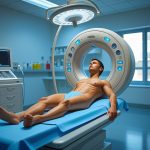The sensation of needing to urinate is typically linked to a physically full bladder – a natural signal from your body indicating it’s time to relieve itself. But what happens when that urgent feeling arises even when you know your bladder isn’t particularly full? It’s a surprisingly common experience, one that can range from mildly irritating to genuinely disruptive, causing anxiety and impacting daily life. This perplexing phenomenon isn’t always indicative of a medical problem; often it stems from habits, sensitivities, or temporary physiological states. However, understanding the potential causes and recognizing when to seek professional guidance is crucial for managing this frustrating sensation.
This article will delve into the intricacies of experiencing an urge to pee without substantial bladder fullness. We’ll explore the various factors that can contribute to this experience, differentiating between common, benign explanations and those that might warrant further investigation. It’s important to remember that bodily functions are complex, and a nuanced understanding is key to addressing concerns effectively. Ultimately, we aim to provide information that empowers you to assess your situation and make informed decisions about your health and wellbeing – not to diagnose or treat any condition, but rather to offer clarity and direction.
Understanding the Urge: Beyond Bladder Volume
The urge to urinate isn’t solely determined by how much liquid is in your bladder. It’s a multifaceted process involving several components. Sensory nerves within the bladder wall detect stretch as it fills, sending signals to the brain. However, these signals can be influenced by factors beyond physical fullness – psychological states like anxiety or stress, habits related to fluid intake and urination frequency, and even neurological conditions. The brain interprets these signals and determines when you perceive an urge. This means that a relatively empty bladder can still trigger a strong sensation if other factors are at play. It’s also important to consider the pelvic floor muscles; their function significantly impacts bladder control and the perception of urgency. A weakened or overly tense pelvic floor can contribute to frequent and urgent sensations, even without significant bladder filling.
Furthermore, certain foods and beverages can exacerbate this feeling. Caffeine, alcohol, and spicy foods are known diuretics – they increase urine production – but more importantly, they can irritate the bladder lining, heightening sensitivity and triggering urgency. Similarly, artificial sweeteners and acidic fruits (like citrus) can have a similar effect in some individuals. The perception of needing to urinate is highly individual; what triggers urgency for one person might not affect another. It’s also worth noting that our brains are remarkably adept at creating learned associations. If you consistently rush to the bathroom even when only mildly full, your brain may begin to associate certain situations or feelings with the urge to pee, triggering it preemptively.
Finally, understanding the difference between urgency and frequency is key. Frequency refers to how often you urinate, while urgency describes the strong, sudden, and compelling need to urinate immediately. You can experience one without the other, or both simultaneously. Experiencing an urge without fullness leans more towards heightened sensitivity and misinterpretation of signals rather than a genuinely full bladder driving the sensation.
Potential Contributing Factors: Lifestyle & Habits
Many times, the urge to pee when your bladder isn’t full is rooted in everyday habits and lifestyle choices. Here are some common contributors:
- Fluid Intake Patterns: Drinking large amounts of fluids quickly, or consistently sipping throughout the day, can lead to a heightened awareness of bladder sensations. It’s often more beneficial to spread fluid intake evenly rather than gulping down large volumes at once.
- Diuretic Consumption: As previously mentioned, caffeine, alcohol, and certain foods act as diuretics. Reducing intake of these substances can lessen bladder irritation and urgency.
- “Just in Case” Urination: This is a common habit where you urinate even when you don’t particularly feel the urge, “just in case” you might need to soon. This weakens the bladder’s capacity and reinforces the association between mild sensations and immediate urination. It essentially trains your bladder to empty more frequently, making it more sensitive over time.
- Pelvic Floor Dysfunction: A weak or hyperactive pelvic floor can significantly impact urinary control. Weakness leads to urgency due to an inability to properly support the bladder, while hyperactivity causes muscle tension that mimics a full bladder sensation.
- Constipation: Believe it or not, constipation can contribute to urinary urgency. The rectum and bladder share proximity; a full bowel can put pressure on the bladder, triggering the urge to urinate.
Addressing these lifestyle factors often leads to significant improvement. A simple strategy is to practice “scheduled voiding” – intentionally delaying urination for slightly longer periods (15-30 minutes) when you feel the initial urge, gradually increasing the interval over time. This helps retrain your bladder and increase its capacity. Remember, consistency is key; it takes time and effort to change ingrained habits.
The Role of Anxiety & Stress
The mind-body connection is powerful, and anxiety and stress can play a surprisingly significant role in urinary urgency. When we’re stressed or anxious, our bodies enter “fight or flight” mode, triggering several physiological changes that can impact bladder function. This includes increased muscle tension throughout the body, including the pelvic floor muscles – leading to feelings of pressure and urgency.
Furthermore, anxiety often leads to hyper-awareness of bodily sensations. We become more attuned to even minor signals from our bodies, interpreting them as significant or problematic. This is particularly true for individuals prone to health anxiety, who may fixate on urinary sensations and amplify their perceived severity. The anticipation of urgency can itself create a self-fulfilling prophecy – the fear of needing to pee triggers the sensation, even before any actual bladder fullness exists.
Managing stress and anxiety through techniques like mindfulness, deep breathing exercises, yoga, or meditation can significantly reduce urinary urgency. Addressing underlying anxieties with professional support (therapy) may be necessary for more persistent cases. It’s also important to recognize that chronic stress weakens the immune system and overall health, making you more susceptible to various physical symptoms, including those related to bladder function.
When to Seek Professional Help
While many instances of urgency without fullness are benign and can be managed with lifestyle adjustments, there are situations where professional evaluation is necessary. If you experience any of the following, it’s important to consult a doctor:
- Sudden Onset: A sudden and unexplained change in urinary habits, particularly if accompanied by pain or discomfort, warrants investigation.
- Persistent Symptoms: Urgency that persists for weeks or months despite lifestyle modifications should be evaluated.
- Associated Symptoms: Blood in the urine (hematuria), lower back pain, fever, or difficulty urinating are all signs of potential underlying medical conditions.
- Interference with Daily Life: If urinary urgency significantly impacts your quality of life – causing anxiety, disrupting sleep, or limiting activities – seeking professional help is crucial.
- Underlying Medical Conditions: Individuals with diabetes, neurological disorders (like multiple sclerosis), or a history of pelvic surgery should be particularly vigilant about changes in urinary habits.
A healthcare provider can perform a physical exam, review your medical history, and order tests to rule out underlying causes such as: – Urinary tract infection (UTI) – Overactive bladder (OAB) – Interstitial cystitis (IC) – chronic bladder inflammation – Pelvic organ prolapse – Neurological conditions affecting bladder control. Treatment options will vary depending on the diagnosis, but may include medication, pelvic floor therapy, or lifestyle modifications. Remember, proactive healthcare is essential for maintaining your wellbeing and addressing concerns effectively.





















